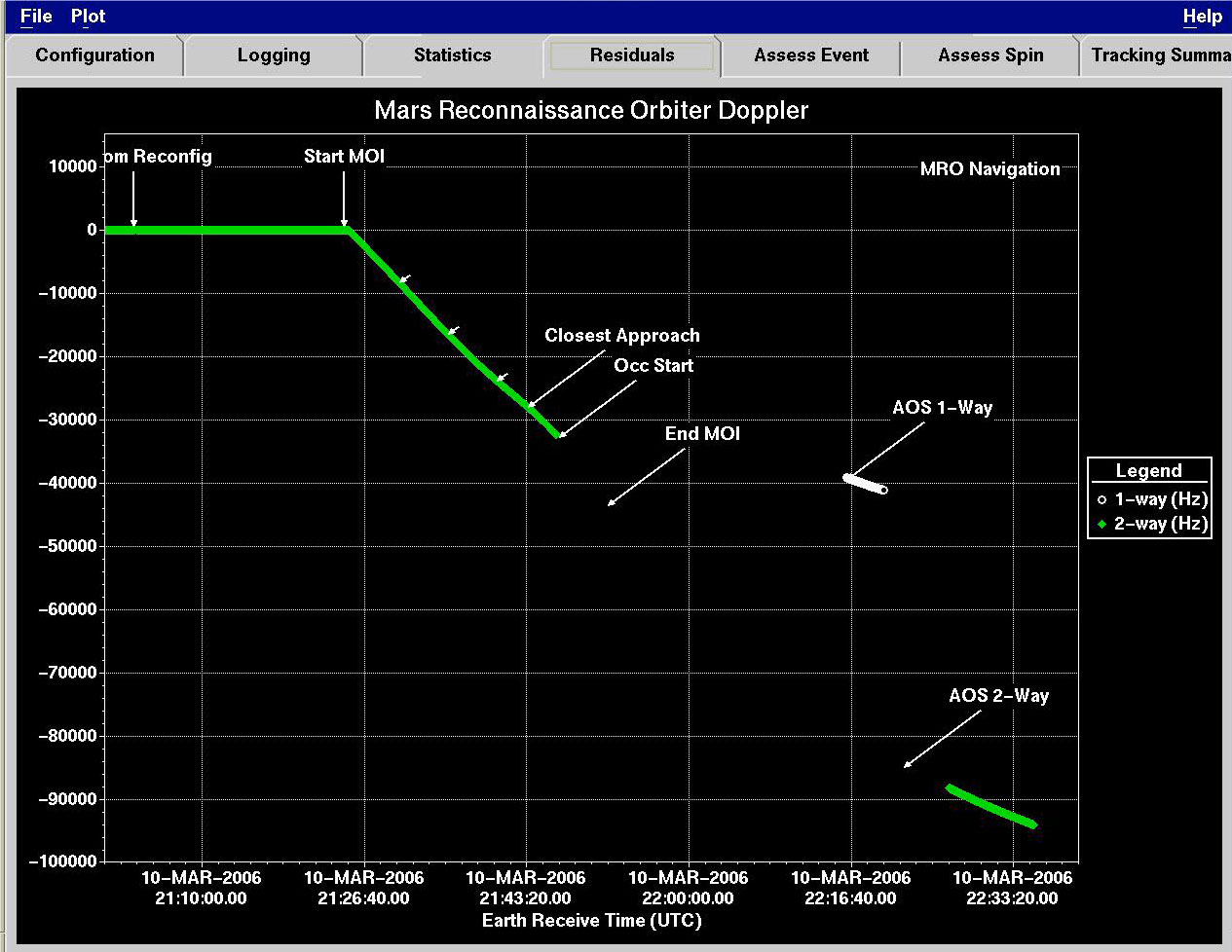When Mars Reconnaissance Orbiter went through its critical engine firing during orbit insertion, the mission team closely followed a graph called the Doppler plot. The picture-perfect pattern meant Mars Reconnaissance Orbiter had been captured as planned in orbit around Mars
Learn about what happened step by step.
 |
Most people are familiar with the phenomenon of a car horn or train whistle changing its frequency as it moves toward or away from them. Electromagnetic radiation (light waves or radio signals) also experiences this effect. The size of the frequency shift, or "Doppler shift," depends on how fast the light source is moving relative to the observer. Astronomers often refer to the "redshift" and "blueshift" of visible light, where the light from an object coming toward us shifts to the blue end of the spectrum (higher frequencies) and light from an object moving away from us shifts toward the red (lower frequencies).
Mars Reconnaissance Orbiter communicated with controllers on the ground by radio signal. Ground controllers knew the frequency of the signal emitted from the spacecraft. As the spacecraft was moving away from (or toward) the Earth, the radio frequency experienced a Doppler shift to a different frequency. Engineers (or, more accurately, computers) compared the received frequency with the emitted frequency to measure the Doppler shift. It was then a straightforward calculation to determine the velocity that caused the observed Doppler shift.